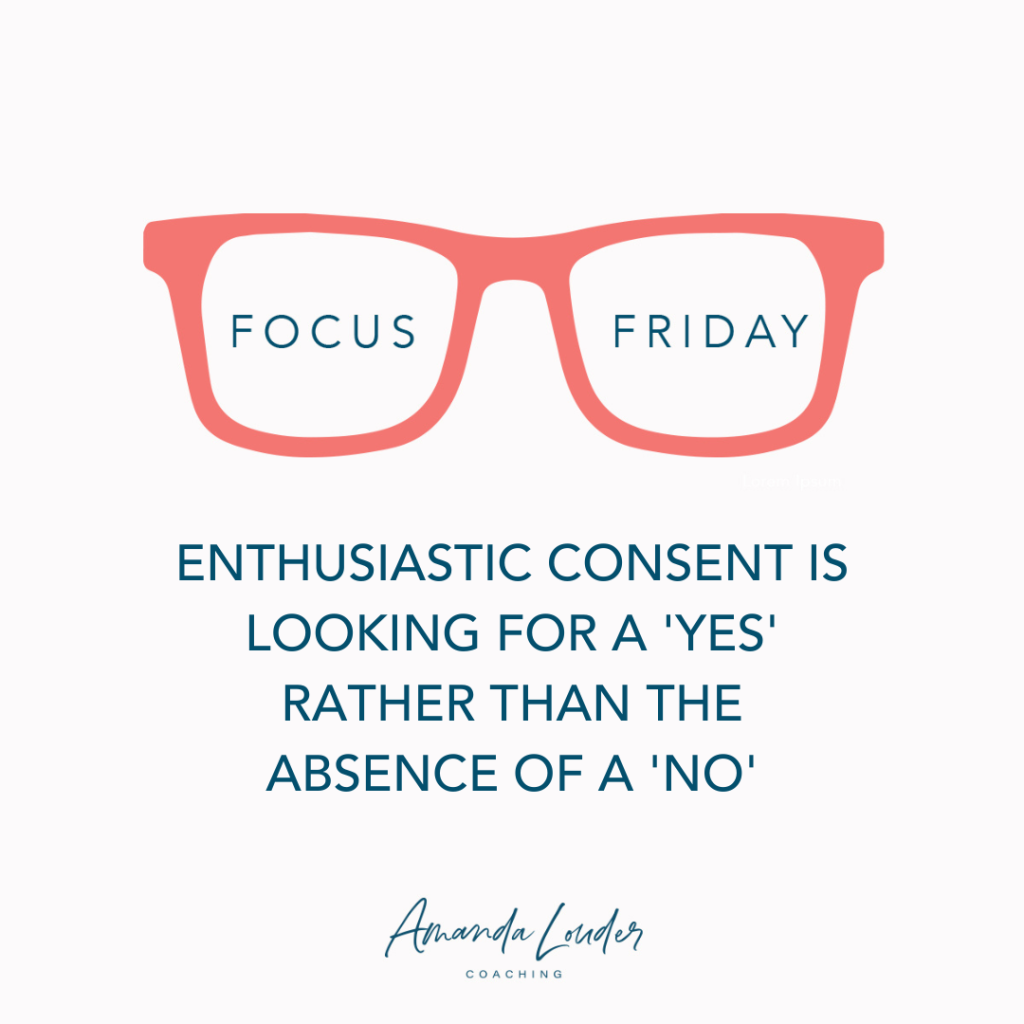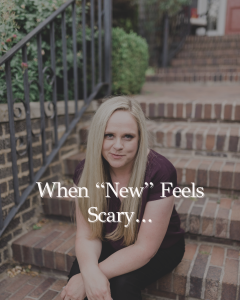
What is enthusiastic consent and why do we need to talk about it? That’s what we’re going to delve into in this episode. We have to enthusiastically consent to sex every single time. Just laying there and letting him do whatever he wants isn’t enthusiastic consent. Listen in to see how to give enthusiastic consent and how much better it can make your sex life.
Show Notes:
Follow Amanda on Facebook and Instagram.
Join Amanda’s Private Facebook Group.
References for this episode:
Show Summary:
In past episodes of the podcast we have talked about consent. That sexual consent is still needed within marriage and what that looks like. So let’s just do a quick review of what consent is and what that means for marriage.
According to Helpingsurvivors.org Consent in a sexual context means actively and freely agreeing to engage sexually with another person. It lets someone know that sex is wanted. And even within marriage, sexual activity without consent is rape or sexual assault.
Prior to engaging in any sexual activity, it’s important to ask about your partner’s comfortability and desires. When engaging in sexual activities, you should establish boundaries by determining what you want or don’t want. Both individuals need to agree to sex EVERY SINGLE TIME for it to be consensual.
Planned Parenthood has developed an acronym for determining when consent is established: FRIES
Freely Given: Consent is freely given when it is a choice you make without pressure, manipulation, or being under the influence of drugs or alcohol. If you feel like you can’t say no, then consent isn’t freely given. If there are consequences if you say no, like a spouse who whines, pouts, is grumpy, gets angry with your or the kids, or gives you the cold shoulder and withdraws, then sex can’t be freely given.
Reversible: Consent is reversible. You, or your partner can change your mind about sex any time, even after starting to engage. If you aren’t getting aroused, if it’s painful, if you aren’t feeling safe, or for any other reason, you can withdraw consent at any time. Yes, your partner may feel hurt or disappointed, and that is ok. This is not a reason to not stop if you need or want to.
Informed: You can only consent to something that you are fully informed about. If you don’t know that your partner has an STI or isn’t on birth control, then you are not informed and consent is not fully established.
Enthusiastic: we are going to be talking about this one in depth, so let’s move on to the last one and circle back.
Specific: Saying yes to one thing doesn’t mean you have said yes to other things.
Consent can’t be implied by past behavior, how someone is dressed, or where things lead. Consent must be clearly communicated and there should be no question or mystery as to whether an agreement has been made.
And I can’t believe I even have to say this, but I do because I’ve heard it from so many women. If your spouse is ASLEEP, they can not give consent. So unless they have given you explicit permission to grope them, to take their hand and touch you in a sexual way, or have sex with them while they are sleeping, DON’T. That is NOT okay!
So, let’s talk about enthusiastic consent, because I think this can be hard for some to understand what is meany by enthusiastic consent.
Enthusiastic consent means a willingness to perform sexual activities. It means looking for the presence of a “yes” rather than the absence of a “no.” (Rainn.org)
I think that when we think about enthusiastic consent we think that the person needs to be jumping up and down excitedly and I don’t think that’s necessarily true but is hopefully the goal.
For many lower-desire partners or partners who have a more responsive desire (like the majority of women) being what we typically think of as “enthusiastic” may not be what happens or be possible from the get-go. But, if you know that if you are WILLING to try, and that once you get going that you truly do love it and can be enthusiastic about it, I think that is great! So maybe if it doesn’t start enthusiastic, and it starts more of a “let’s see how this goes” then you can get to an enthusiastic place by the end. There’s a willingness to try and a flexibility in being able to stop or slow down at any point (without repercussions) if the responsive desire doesn’t kick in.
I know many higher desire husbands would gladly take a “I’m willing to try” over a “I’m not in the mood.” And if desire and that enthusiasm doesn’t kick in a “it’s not working for me, let’s finish you off” or “it’s not working for me, can we just cuddle naked” over just about anything else.
I also think it’s possible to show up enthusiastically for sex, even if you aren’t in the mood. You can be enthusiastic about the fun it is to try and get in the mood. The kissing. The touching. You can be enthusiastic about the connecting. You can also be enthusiastic about the enthusiasm your partner is showing and how fun it is to turn them on.
I think we can also look at our partner participating as being enthusiastic consent. I’ve heard of too many situations where the wife is basically just laying there and letting her husband do whatever. And while consent has technically been given, the enthusiasm definitely isn’t there.
So what are some other ways we can be enthusiastic?
- A smile
- A wink
- A nod
- Maintaining eye contact
- Initiating or returning kisses and touch
- Removing clothes
- Using affirmative language
- Saying “go lock the door”
- Providing positive feedback when you’re comfortable with an activity
- Asking for certain things you want
At the end of the day, we want a partner who is engaged and having fun rather than being passive and disinterested. Practicing enthusiastic consent is a natural way to ensure that both parties are having or wanting to have a good time. So even if your partner isn’t jumping up and down, if they consent and seem interested in proceeding, work together to get to the enthusiasm part. I don’t know too many women who have great orgasms and connecting experiences who won’t be pretty enthusiastic by the end.




